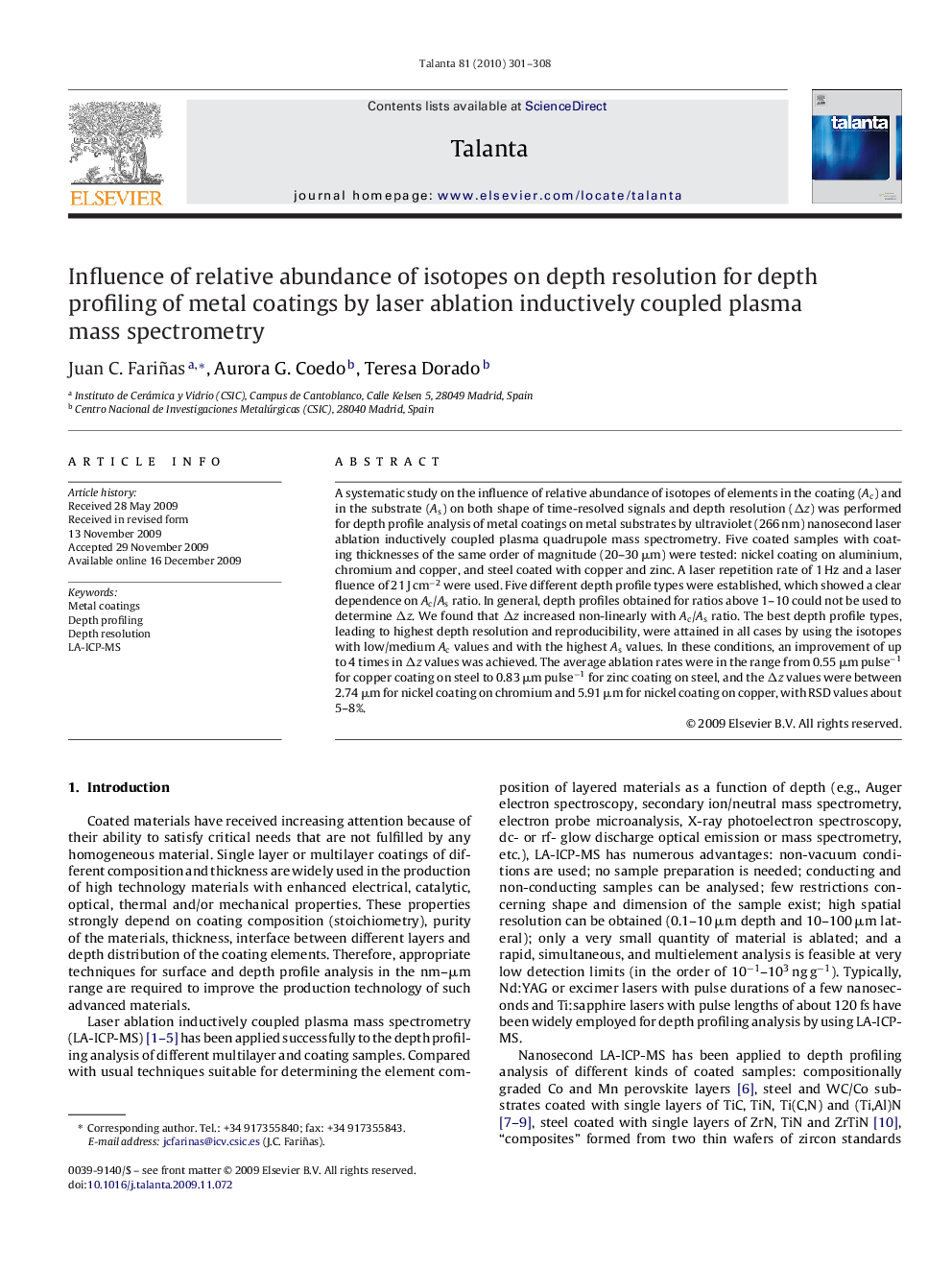| Article ID | Journal | Published Year | Pages | File Type |
|---|---|---|---|---|
| 1246648 | Talanta | 2010 | 8 Pages |
A systematic study on the influence of relative abundance of isotopes of elements in the coating (Ac) and in the substrate (As) on both shape of time-resolved signals and depth resolution (Δz) was performed for depth profile analysis of metal coatings on metal substrates by ultraviolet (266 nm) nanosecond laser ablation inductively coupled plasma quadrupole mass spectrometry. Five coated samples with coating thicknesses of the same order of magnitude (20–30 μm) were tested: nickel coating on aluminium, chromium and copper, and steel coated with copper and zinc. A laser repetition rate of 1 Hz and a laser fluence of 21 J cm−2 were used. Five different depth profile types were established, which showed a clear dependence on Ac/As ratio. In general, depth profiles obtained for ratios above 1–10 could not be used to determine Δz. We found that Δz increased non-linearly with Ac/As ratio. The best depth profile types, leading to highest depth resolution and reproducibility, were attained in all cases by using the isotopes with low/medium Ac values and with the highest As values. In these conditions, an improvement of up to 4 times in Δz values was achieved. The average ablation rates were in the range from 0.55 μm pulse−1 for copper coating on steel to 0.83 μm pulse−1 for zinc coating on steel, and the Δz values were between 2.74 μm for nickel coating on chromium and 5.91 μm for nickel coating on copper, with RSD values about 5–8%.
